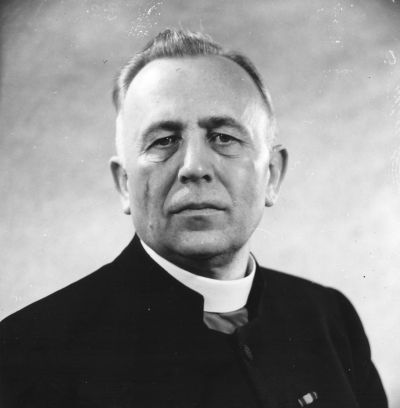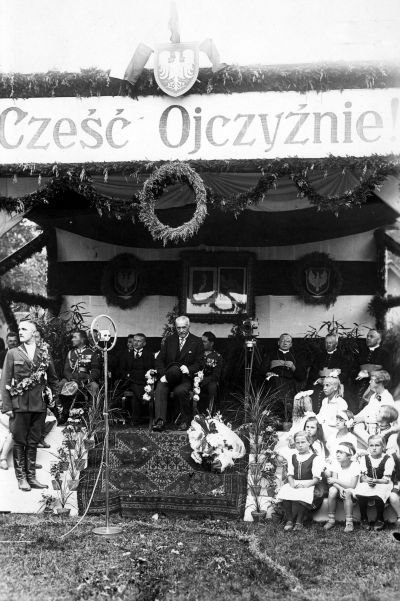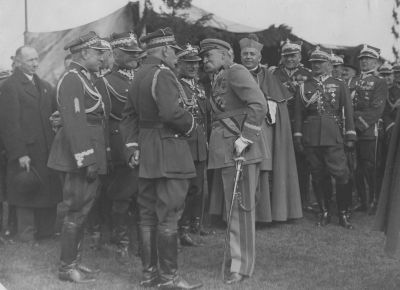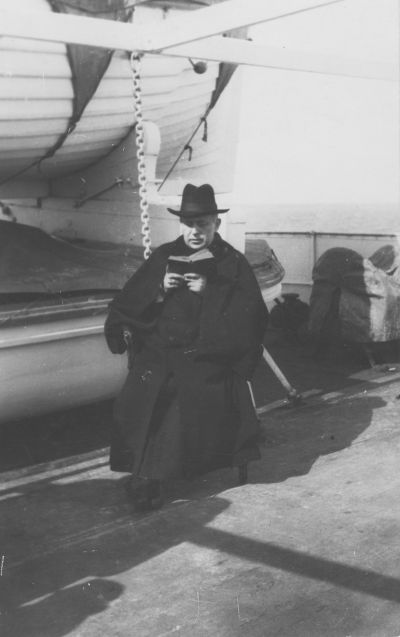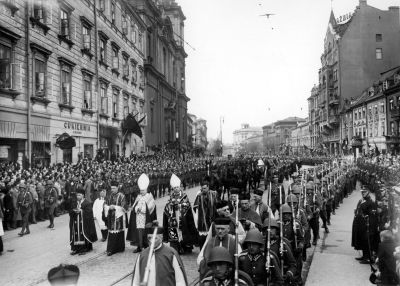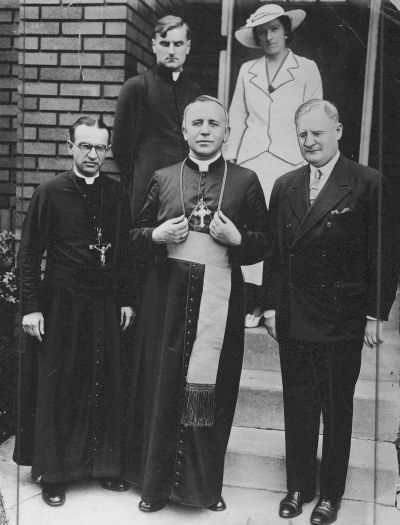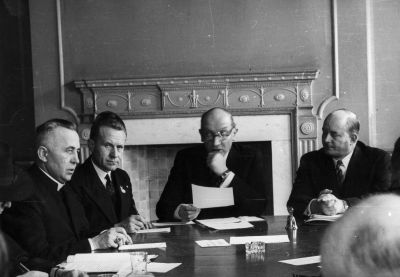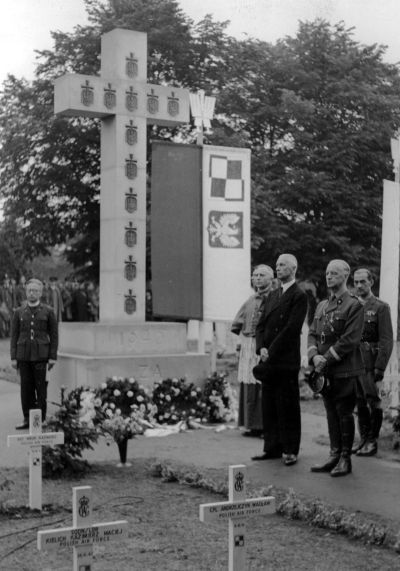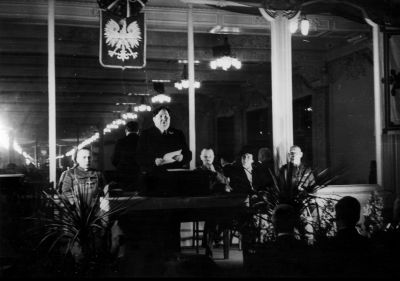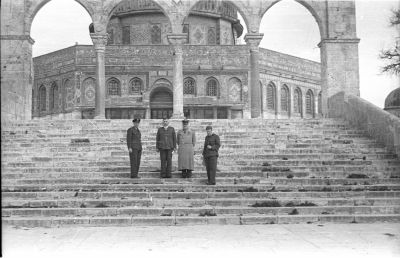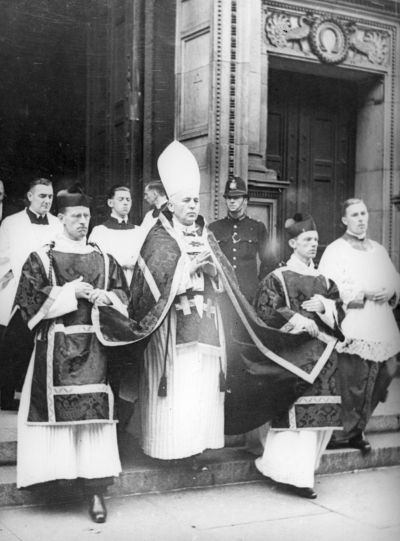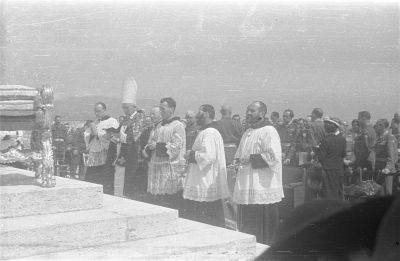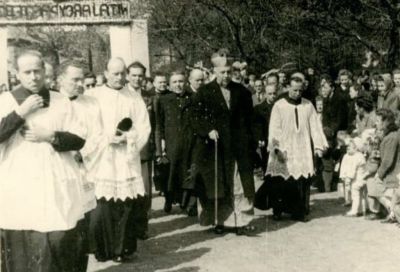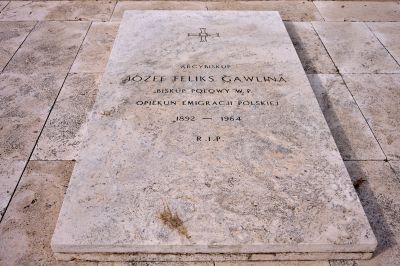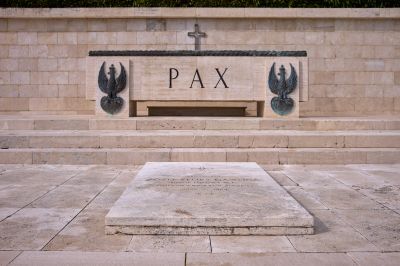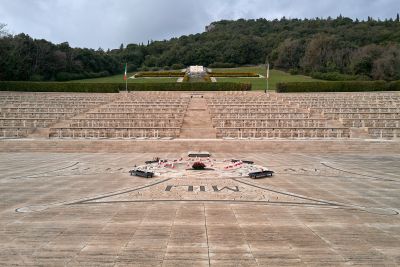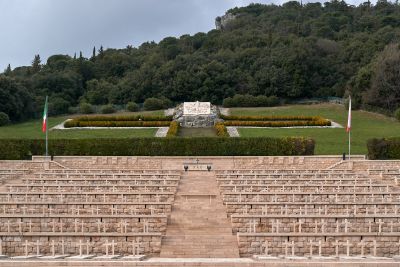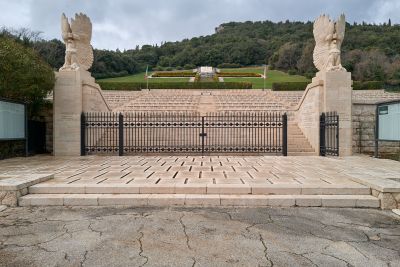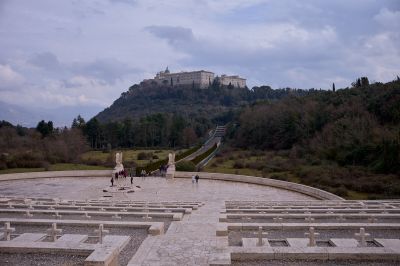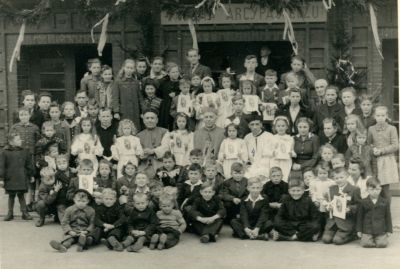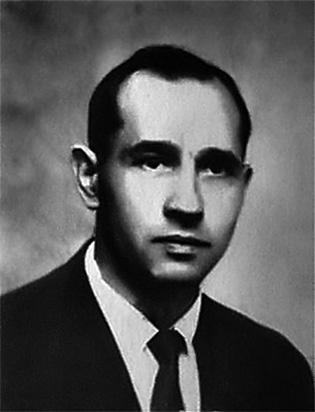Józef Feliks Gawlina (1892–1964). Legendary Polish pastor in Germany
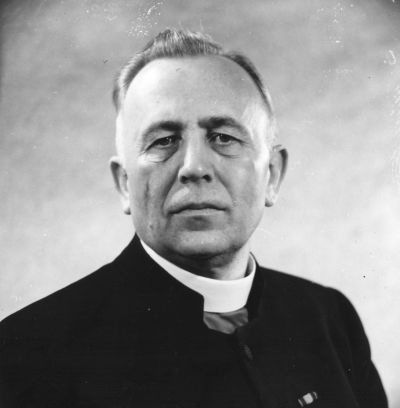
Childhood and youth
Józef Feliks Gawlina was born on 18 November 1892 in Strzybnik (Silberkopf), 6 km from Racibórz (Ratibor) near Opole (Oppeln) in Silesia. He was the son of Franciszek and Joanna, née Banaś. He attended the local school in Strzybnik before moving on to a humanistic grammar school in Racibórz. At first, he walked there on foot, before moving to accommodation in Racibórz and later in the town of Rybnik. In Rybnik, he obtained his higher school-leaving qualification (Abitur) at the Imperial Prussian Grammar School (Königlich-Preußisches Gymnasium). He then enrolled for the summer semester at the Catholic theological faculty of the University of Wrocław (Breslau) and lived in a seminary. After passing his exams and spending a year at a religious boarding school (Alumnat), he was qualified to apply to receive the sacrament of holy orders. During the second semester, his studies were interrupted when he was called to serve in the Prussian Army. He joined the 11th Grenadiers regiment and on 3 April 1915 his regiment advanced towards the French front. In November, he was wounded and was ordered to return to Wrocław, where he served in the garrison and continued his studies. In September 1917, he was sent to the Turkish front, was taken prisoner of war in 1918 near Damascus, and was released there in November 1919.
Gawlina the priest
After returning from imprisonment, Gawlina began a new period of study in Wrocław in the winter semester of 1920. On 19 June 1921, when he was 28, he was ordained as a priest by the Bishop of Wrocław, Adolf Bertram. As a German citizen, he was dispatched to the parish of Dębieńko (Debenko) in the part of Silesia belonging to Germany, where he worked for one year. In April 1922, he was transferred to Tychy (Tichau). On 21 May 1923, he requested that he be transferred to the newly established apostolic administration of Polish Silesia in Katowice. On 7 July 1924, the administrator of the diocese, Father August Hlond, named him Secretary General of the Catholic League for the apostolic administration for Silesia on the Polish side. From 2 to 4 September 1924, he organised the Third Silesian Congress in Katowice, which was regarded as his greatest personal achievement. At this congress, the idea for a future Catholic press agency and a Catholic daily newspaper was born. On 25 September 1924, the diocese administrator Hlond transferred the editorship of “Gość Niedzielny” (“Sunday Visitor”), the weekly newspaper of the Apostolic Administration and later of the diocese of Katowice, to Father Gawlina (the newspaper was founded by Teodor Kubina). In 1926, August Hlond became Archbishop of Gniezno (Gnesen) and Poznań (Posen) and primate of Poland; in June 1927 he was made a cardinal. As the primate of Poland, he delegated the task of establishing a Catholic press agency in Warsaw (1927–1929) to Gawlina. While living in Warsaw, Gawlina gained a Master’s degree in moral theology (1928) before obtaining a doctorate. In March 1929, he returned to Katowice after being appointed to the curial council as well as to the role of notary and head of the Catholic Action group of the diocese of Katowice (established by Pope Pius XI on 28 October 1925). On 21 July 1931, he took over the chairmanship of the parish of St. Barbara in Chorzów (until 1934: Königshütte), founded the “Caritas” office, a children’s home and a canteen for the poor, and initiated the publication of the weekly “Parish News”. In 1925 and 1931, he headed the diocese pilgrimages to Italy. Due to the overwhelming amount of work, he withdrew as head of the Catholic Action group and as canon of the cathedral chapter in Katowice; the parish of Chorzów had a congregation of 30,000.
Gawlina the army bishop
IIn February 1933, Marshal Józef Piłsudski offered Father Gawlina the office of army bishop to the Polish army. Piłsudski retained the right to determine the tasks to be performed by the army priest, while the technical and organisational details were to be agreed with General Adam Korwin-Sokołowski. On 1 January 1933, he was temporarily appointed army bishop, and on 19 March 1933, his name day, was consecrated in his parish in Chorzów. The consecration was given by Cardinal August Hlond. The other consecrators were the Bishop of Katowice, Stanisław Adamski, and the Bishop of Łódź, Wincenty Tymieniecki[1]. The newly appointed bishop was awarded honorary citizenship of Chorzów. In his emblem, the bishop incorporated elements related to Chorzów: a tower – the symbol of the Holy Barbara, patron saint of miners and artillerymen – and the motto “Turris fortissima – nomen Domini” (“The strongest tower – is the name of the Lord”).
On 9 April, the bishop-designate moved into the army cathedral in Warsaw. He retained the structures of the episcopal curia, while assuming responsibility for 128 military pastors. He travelled to the most remote military training areas and barracks, spoke to the soldiers and gave them comfort. He had a direct manner, and tried to help the soldiers whenever possible, which occasionally put his superiors in danger.[2] He quickly became known as an outstanding conference speaker, a good preacher, and a promoter of Catholic culture. At the funeral of Marshal Piłsudski in May 1935, he won the hearts of the people. He founded new military pastoral centres, as well as churches for garrisons and schools. He spent a great deal of time providing pastoral care to young people serving in the workers’ corps. Shortly before the Second World War, he was appointed Archbishop and Metropolitan of Warsaw.
[1] Józef Bańka, Erzbischof Józef Gawlina III, DPZG no./1970, p. 303–315.
[2] Jerzy Myszor, Arcybiskup Józef Gawlina – Wspomnienia, Katowice 2004, p. 125 f.
The Second World War
Gawlina was in Warsaw at the outbreak of the Second World War. On 4 September 1939, the army curia was evacuated, and during the night of 6 to 7 September, he left the capital at the order of the Marshal of Poland, Edward Śmigły-Rydz. He reached Łuck (Lutsk), where he was wounded. On 18 September, he crossed the Polish-Romanian border. From Bucharest, he travelled on to Rome via Hungary. Pope Pius XII received him for an audience and extended his tenure as army bishop. Gawlina then continued to France, where he took up his post as field bishop to the Polish Army in France on 18 October 1939. On 12 November 1939, he was appointed Deputy Chairman of the Polish Red Cross for the duration of the war by General Władysław Sikorski. Since he was otherwise unable to remain in contact with the Polish soldiers who had fled the country in the wake of the attacks on Poland by Germany, he held masses and gave sermons for them via radio. He published the “Prayer book of Polish Soldiers”. He was a member of the National Council of Poland, the military commission and the legal and constitutional commission, and of the Supreme Council of the Global Union of Poles (Światowy Związek Polaków z Zagranicy) in France. In October 1940, after the defeat of France, he escaped to England.
In January 1942, he left London and together with Father Marcin Chrostowski OP, travelled by sea, air and land through Ghana, Nigeria and other African countries to Palestine. After spending a longer period of time in Baghdad and Iran, and due to the difficulties of flying directly to Moscow, they reached Baku on 19 April, and from there, travelled by train to the Russian capital, which they reached several days later. In May 1942, with the help of Father Braun, an American Assumptionist (the only official Catholic priest in Moscow), they continued by train to Kuybyshev in western Siberia. The Polish ambassador, Stanisław Kot, supported him by providing information and also helped to organise the departure from Russia of the Polish soldiers, civilians and above all the children who had been deported there. Gawlina visited military units, and held discussions with General Władysław Anders, pastors and soldiers. He travelled through Uzbekistan, Tajikistan and Kazakhstan. After numerous protracted negotiations, Joseph Stalin agreed to allow 70,000 people to leave Russia, among them more than 2,000 children, who had been deported to Siberia after 17 September 1939 when the Soviets had conquered eastern Poland. The departure proved difficult to arrange. The route out led through Iran and Iraq to Palestine. The operation took more than a year to complete.
In February 1942, Gawlina travelled to the United States. In Florida, he visited the apostolic delegate Amleto Cicognani and the Polish ambassador Jan Ciechanowski. In Washington, he held talks with US President Franklin D. Roosevelt (24 February 1943) and then with US bishops and representatives of Polish organisations in New York, Detroit, Buffalo, Chicago and Philadelphia. He also spoke with leading figures in the NCWC (National Catholic Welfare Conference) and the Catholic League. Wherever he went, he addressed the problem of the Polish children still remaining in the Soviet Union. At the end of April, he arrived in Cairo, visited Polish units in Iran and Egypt, and flew to England to attend the funeral of General Sikorski. Later, he joined the 2nd Corps, and with his fellow corps members fought battles in Italy, including the Battle of Monte Cassino. In June 1944, he was granted an audience with Pope Pius XII. In the State Secretariat, Gawlina held discussions with Monsignores Tardini and Montini (who later became Pope Paul VI). In April 1945, he flew to northern Germany. There, he visited the camp in Oberlangen for the women deported from the Warsaw uprising and the Polish military units in Papenburg and Walchum. He then travelled to Brussels, where he set up pastoral care centres for the military and provided pastoral care himself. During the war, he founded two seminaries in Beirut and Glasgow. In 1947, he founded the Hosianum publishing house in Rome.
Bishop for the Poles living in Germany
On 4 June 1945, Gawlina was appointed ordinary to the “civilian Poles” in Germany and Austria, in addition to his responsibility for the military pastoral care. He addressed a special message to the priests in Dachau concentration camp, and thanked them for their testimony of faith and strength of spirit. On 26 June 1945, he arrived in Munich, bringing the first material aid to the priests. He met with them in Dachau and Freimann, and appointed Father Franciszek Jedwabski as vicar general, with the task of establishing an episcopal curia. In June and July 1945, more than 500 priests, former prisoners of the concentration camps in Dachau and Mauthausen in Austria, volunteered to offer pastoral care in three of the four zones of occupation: the American, British and French. At first, the curia was based in the Freimann camp; from November onwards, its head office was in Frankfurt/Main. Father Jedwabski was recalled to Rome. Edward Lubowiecki, a priest from the diocese of Kraków, who until then had been a priest in Linz, became the new vicar general. On 29 June 1945, Gawlina began travelling to the centres for displaced persons (DPs) in the American zone, in Rebdorf, Weißenburg, Wildflecken, Coburg, Murnau and elsewhere. He paid multiple visits to the American and British authorities, the German bishops and the liaison officers in the DP camps. Bishop Gawlina published the curia agenda “Official News” for priests, and on 1 August 1945, the “Pastoral Instruction” as a legal and administrative guideline for the work of the priests (published until 1949), such as how to keep activity records and archives, the upkeep of graves, school education and support for compatriots in the DP camps. On 25 August, he publicly announced the new pastoral structure of his diocese and replaced six local deacons. He conducted talks with American and British leaders about pastoral care for Polish DPs in the camps and in the guard and labour companies. In 1945, he visited camps, conferring the sacrament of confirmation and coming into contact with the officers of the occupying forces, often with a less than pleasant outcome. The first visit was paid to the American zone (29/6–27/8/1945), and the second to the British zone (25/10–22/12/1945). The vicar general regularly corresponded with the ordinary and coordinated everyday diocesan matters with him. The bishop was concerned about the attitude among the occupying authorities towards the Poles – both those who had survived the concentration camps and the forced labourers who had been deported to the Reich to work there. He was a true patriot, encouraging the Poles to be loyal to their homeland at every opportunity, even though for political reasons, he was unable to return there himself.
Activities in Rome
During the years that followed, Gawlina travelled to the United States multiple times, where he gave lectures and persuaded others to help the DPs in Germany, as well as to make it easier for them to emigrate to the US, Canada and other countries. He encouraged the priests to remain in their posts and to remain independent when it came to exerting influence over repatriation or emigration. He lived in Rome, at the Polish church of San Stanislao alle Botthege Oscure. In 1949, after the death of Cardinal Hlond, Pope Pius XII appointed Gawlina as the Spiritual Protector of Poles in exile (Protector of the Polish Emigrés). He wrote a great deal, and made efforts to maintain contact with the Polish pastoral centres throughout the world. In relation to the pastoral missions, he endeavoured to ensure an appropriate jurisdiction and to secure options for regulating activities by the local church. In 1949, he also began publishing the magazine “Duszpasterz Polski poza granicami” (DPZG), which appeared regularly and which consisted of two parts: one comprising news and educational material, and the other containing helpful information for writing sermons. As part of the preparations among Polish emigrés for the millennium anniversary of the Baptism of Poland, he initiated the publication of the annual entitled “Sacrum Poloniae Millenium”. He maintained regular contact with the authorities in the Vatican. Since his worsening health prevented him from visiting his diocese in Germany regularly, the responsibility for the rights of jurisdiction and the representation of the ordinary before the civilian and church authorities was transferred to the vicar general.
On 29 November 1952, Gawlina was made titular archbishop of Madito. That same year, he joined the Supreme Emigration Council, of which he later became a member of the executive committee. In 1954, the Pope entrusted him with the office of Director of the World Association of Marian Congregations. In preparation for the Second Vatican Council, Pope John XXIII appointed Józef Gawlina as a member of the preparation committee for episcopal matters and the administration of the dioceses. Gawlina spent two years working intensively in this role, which cost him what was left of his strength and health. In his work, his foreign language skills and his understanding of the situation within the church on the different continents were great assets.
Death and burial
Józef Felix Gawlina died of heart failure in the early hours of 22 September 1964 in his apartment in Rome. He was first interred in the Campo Verano cemetery in Rome, in the vault of the Felician Sisters. On 28 September 1964, the Holy Mass for the deceased was held in the cathedral of the diocese of Katowice by Bishop Józef Kurpas. Gawlina was taken to his final resting place on 8 April 1965, in the Polish war cemetery in Monte Cassino. In his obituary of Gawlina, Bishop Władysław Rubin wrote: “He went through this world as a soldier, and fell at his post like a soldier. Verus Miles Christi – a true knight of Christ”.
Stanisław Budyn, September 2023
Sources:
Jerzy Myszor, Arcybiskup Józef Gawlina – Wspomnienia, Katowice 2004.
Zygmunt Kotowski, Biskup Polowy ks. Józef Gawlina, Bagdad-Londyn, London 1964.
Władysław Rubin, Niestrudzony Sługa Kościoła, Duszpasterz Polski poza granicami (DPZG), Rome 1965, no. 1, p. 10–16.
Józef Warszawski, Ś. P. Arcybiskup Józef F. Gawlina, DPZG, Rome 1965, no. 1, p. 17–21.
Stanisław Piekut, Biskup Polowy Józef Gawlina, DPZG, 1965, no. 1, p. 22–25.
Józef Bańka, Arcybiskup Józef Gawlina, DPZG, 1970, no. 3, p. 210–226 and no. 4, p. 302–315.
Stanisław Budyn, Ordynariat dla Polaków, in: Wczoraj i dziś duszpasterstwa polskojęzycznego w Niemczech, Hanover 2016, p. 25–43 and Początki Duszpasterstwa polskojęzycznego, p. 105–125.
A Film about Gawlina by Wojciech Wojnicz on Youtube (original version in Polish):
https://www.youtube.com/watch?v=b7j4a3f363s&t=72s
